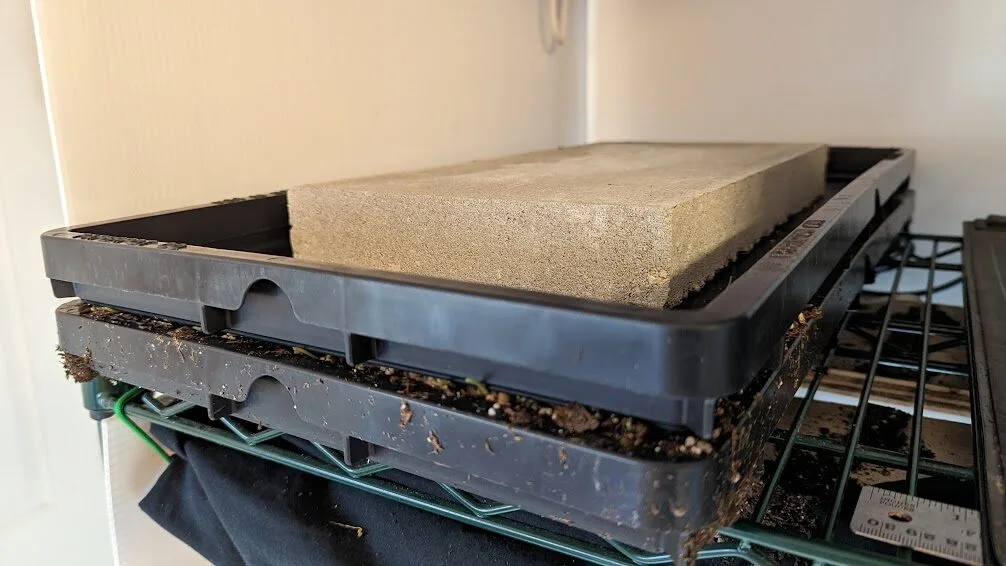
Shifting Products to Fine Tuning Your Crop Plan
Even the best microgreens crop plans will run into challenges. Trays don’t germinate evenly. Deliveries shift. New orders get added. Trays get overwatered or understaffed. The true strength of your crop plan lies not in perfection, but in how adaptable it is when things go off-track.
This article focuses on “shifting products” as a strategy for dealing with crop plan adaptation – especially when you have more demand than product.
The Grow-to-Order Flaw
There is an innate “flaw” in the grow-to-order system: How do you account for growth in your crop plan if you only sow for confirmed orders? Many growers address this by saying to customers that they always need ten or more days notice for a new order – so they can ensure the new order is part of their crop plan. But this is not ideal and often results in lost sales (and lost customers).
Even in a grow-to-order System, which – in theory – means you only sow for confirmed or expected orders, you should be able to service last-minute orders or changes in orders that require more product than you had planned for. Let’s look at how to do this as part of fine tuning your crop plan.
Servicing New Orders – Scale Matters
New Growers
When you are new to production, it is much harder to service last-minute orders if you are growing to order. This is because you usually only have a small amount of crop to work with. In this case, you have of few choices:
- As a new grower, growing extra (buffers) of each crop is always a good idea. In the early days you are likely to experience crop failures, so having buffer crop helps ensure you always have enough crop to fulfill your orders
- Enforce the grow-to-order rule: this helps relieve production pressure in the early days and (hopefully) reduces the amount of excess crop you have each week. But this can result in lost sales and lost customers, who may go elsewhere to get their immediate needs met.
- As a general rule, it is better to overproduce than underproduce. Why? Overproduction results in a slight increase in costs where as underproduction can result in a big loss in sales. Overproduced crop can also be consumed by you and your staff or donated in some fashion. You can also use it for samples or to give you existing customers a bit of a bump in their order.
Smaller-Scale Growers
The challenge with being a “small-scale” grower is the difficulty in staying small if there is demand for your product. If your scale is limited, for whatever reason (production site size, available time, etc.), you may find yourself turning down new orders by sticking strictly to the grow-to-order system.
This can be problematic in the long run. A potential new customer you turn down today because you need to service existing customers may be a customer you cannot attract again the future when you lose one (or more) of your existing customers. So following the new grower guidelines above may be the most beneficial for you.
Probably the easiest way to maintain “small-scale” status is by focusing your sales on farmers markets, where your customers come to you and get serviced on a first-come-first-served basis.
Larger-Scale Growers
As your scale increases, the problem of growing to order usually becomes much less of a problem. Why is this? Because you have much more crop and more customers to help redistribute that crop if needed. Even small changes in crop production can result in big changes in yield when you are dealing with hundreds or thousands of trays each week. This where shifting products comes into play…
Shifting Products Due to Shortfall: Make the Most of What You Have
Shifting products doesn’t mean changing your product line. It refers to redistributing what you’ve already grown across your customer base when something unexpected happens—like:
- Yields are lower than expected
- A customer cancels last-minute
- You receive a new order after seeding has already occurred
Instead of scrambling or issuing refunds, a shifting strategy allows you to partially fulfill multiple orders to maintain customer relationships and avoid waste.
How to apply a shifting strategy:
- Prioritize your most loyal or high-volume customers.
- Reduce each customer’s order slightly instead of canceling an order entirely.
- Communicate early—customers are more receptive to partial orders when they’re notified with time to adjust.
Shifting product keeps your system resilient. It lets you deal with shortfalls, accommodate surprises, and still deliver value to customers without compromising your schedule.
As an example, let’s imagine you have five grocers on your order list who are each getting 20 small units of sunflower shoots at 100 grams each. If you reduce each of those orders to 18 units, you have freed up 1 kg of product that can be redistributed elsewhere.
Shifting Products Due to Overproduction
It can also happen that you have much more product than you anticipated. This usually happens when you get several order cancellations, or when your yield is much more than expected. In this case you can use the product shifting strategy in a similar way. Here are some ways of dealing with excess production:
- Existing customer samples: If you have a delivery for sunflower shoots and pea shoots to a customer, and an overproduction of radish, you can take this customer a radish sample and perhaps that radish becomes part of their future orders.
- Potential customer samples: As a general rule, I like customer samples to be planned and part of my crop plan – ensuring I can reliable provide samples to prospective customers in a scheduled visit. But sometimes a surprise sample can be effective as well – especially if it does not cause you to deviate for your existing delivery route.
- Farmers markets: If you attend farmers markets as well as deliver to other customers, then the market can act as a natural place to reallocate extra crop. You can have a bulk sale at the market, or even just pack a little heavier that week!
Final Thoughts
Shifting products among your customers is a key strategy for adapting to deviations from your crop plan. It becomes easier as you increase your scale of production – so keep this in mind as you grow!

Leave a Reply